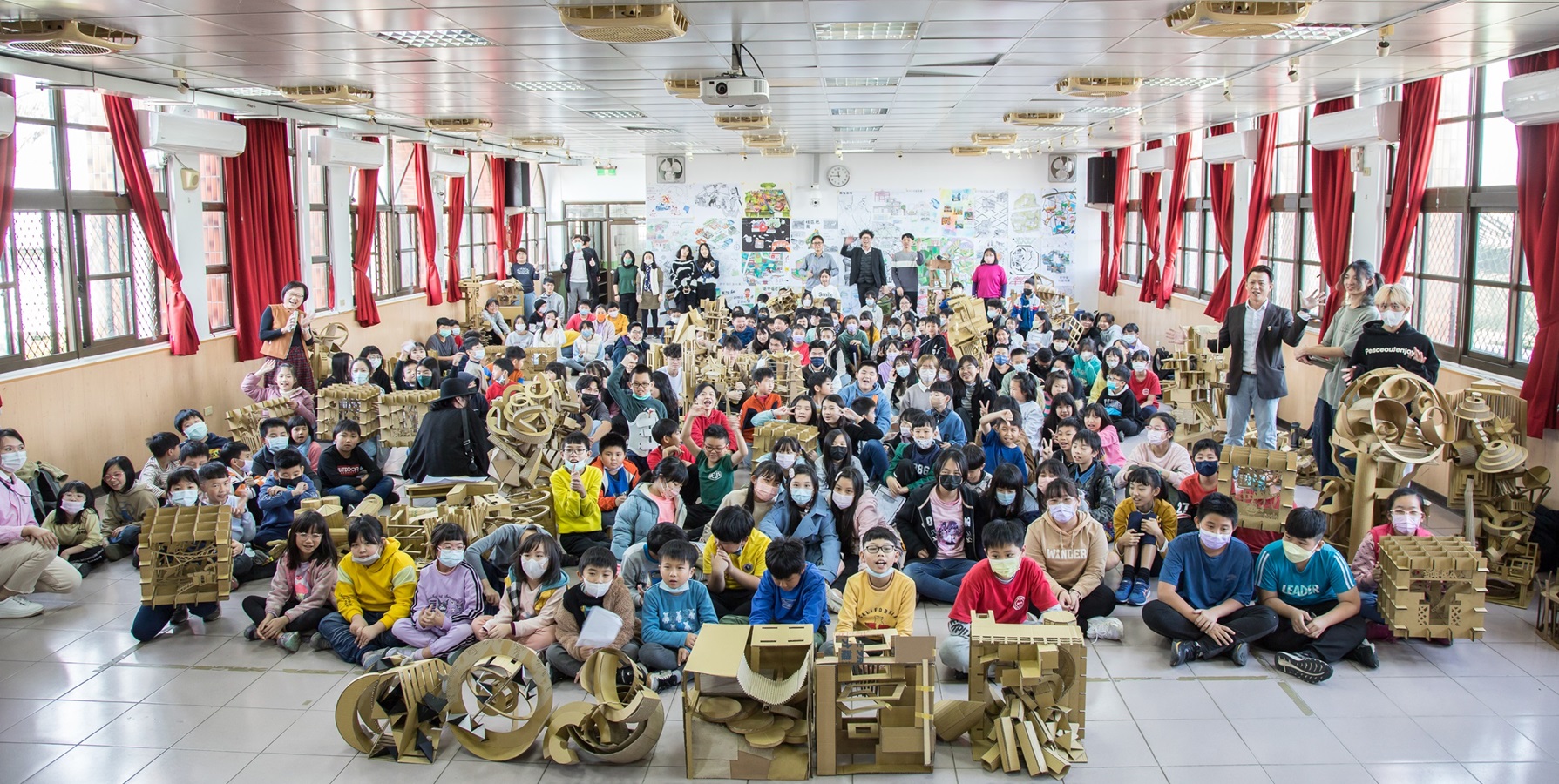To foster students’ creativity, narrative skills, and sensitivity, Professor Tung-Sheng Hsieh from Chung Yuan Christian University’s Department of Architecture, along with seven other faculty members, led 55 freshmen in a semester-long design project involving real-world observations and interactions. Notably, at the beginning of the course, students are assigned to read “Invisible Cities” by Italian writer Italo Calvino. Through literary narrative, environmental elements and human stories are integrated into physical model designs, enhancing the storytelling abilities of the younger generation. This marks the fifth consecutive year of guiding freshmen into practical engagements with local environments in Taoyuan, hence the name of this exhibition, “Invisible Cities: 5.0.”
Chung Yuan Christian University’s freshman “Architectural Design” course held the “Invisible Cities: 5.0 – Narrative of the New Zhongfu Space” exhibition at Xinxing Elementary School in Luzhu District, Taoyuan City. Students in the course were responsible for the entire planning and execution process. After two months of in-depth observations at the site, using maps, texts, collages, architectural drawings, analytical diagrams, and spatial models, they shared stories with 150 elementary school students from the New Zhongfu community. Each freshman student individually completed labor-intensive works, expressing aspects of local culture, history, architecture, landscape, natural environment, and sense of belonging, along with unique imaginations and expectations for the site.
The “Invisible Cities: 5.0 – Narrative of the New Zhongfu Space” design project successfully showcased the talents of Chung Yuan Christian University students and faculty in observation, interpretation, transformation, and spatial creation. They collaborated with teachers and students from Xinxing Elementary School to explore this agricultural community impacted by urban expansion. Students created 16 detailed spatial models based on the New Zhongfu community, utilizing recycled cardboard materials to emphasize environmental sustainability and reuse concepts, providing unique educational resources for Xinxing Elementary School. During the exhibition, although university students initially felt somewhat apprehensive about interacting with children, they wholeheartedly engaged in storytelling, establishing deep emotional connections with the elementary school students.





.jpg)

.jpg)




